LATEST INSIGHTS
For construction and building businesses operating in Queensland, understanding and meeting the annual financial reporting requirements set by the Queensland Building and Construction Commission (QBCC) is crucial.
These requirements are designed to ensure the financial health of businesses in the industry, reduce the risk of failure, and guarantee that payments to individuals and businesses are made on time.
Reporting Timelines
The reporting timelines for QBCC financial reporting depend on the category and turnover of your business. Here's a breakdown:
Categories 1-7 (Turnover above $800,000):
- Due by: 31st December
SC1 and SC2 Categories (Turnover below $800,000):
- Due by: 31st March
Minimum Financial Requirements
To maintain your QBCC license, it's essential to not only know the minimum financial requirements for your business but also ensure that you meet these standards. The following financial ratios must be maintained:
Current Ratio
A licensee must maintain a current ratio of at least 1:1. This means that for every $1 in current liabilities, you should have at least $1 in current assets. It's important to note that some assets are excluded from the current asset calculation, for example trade debtors outstanding for 12 months.
Net Tangible Assets
Licensees must maintain a minimum amount of working capital, not only to run their business but also to keep their QBCC license. The net tangible asset amount determines your annual allowable turnover with QBCC. Breaching this requirement occurs when your net tangible asset position decreases by more than 30%. Keep in mind that some assets are excluded from the net tangible asset calculation, for example goodwill and collectibles.
To help with these calculations, QBCC provides a Maximum Revenue/Net Tangible Asset Calculator, which can be found here.
Maximum Revenue
This is the maximum amount of revenue your business can earn in the financial year based on your net tangible assets and QBCC's approved allowable annual turnover. You must ensure that you don't exceed this maximum revenue by more than 10%.
If your business needs to increase its maximum revenue, you should complete a Minimum Financial Requirements (MFR) report. This report demonstrates that your business has enough net tangible assets to support an increase in turnover.
Net Tangible Assets and Maximum Revenue Requirements
Here are the net tangible asset requirements and maximum revenue for each financial category:
| Net Tangible Assets (NTA) | Maximum revenue | Financial category |
|---|---|---|
| $12,000 | Up to $200,000 | SC1 |
| $46,000 | Up to $800,000 | SC2 |
| $46,001 - $156,000 | $800,001 - $3,000,000 | Category 1 |
| $156,001 - $480,000 | $3,000,001 - $12,000,000 | Category 2 |
| $480,001 - $1,200,000 | $12,000,001 - $30,000,000 | Category 3 |
| $1,200,001 - $2,400,000 | $30,000,001 - $60,000,000 | Category 4 |
| $2,400,001 - $4,800,000 | $60,000,001 - $120,000,000 | Category 5 |
| $4,800,001 - $14,400,000 | $120,000,001 - $240,000,000 | Category 6 |
| >$14.4M | >$240M NTA | Category 7 |
"Understanding and meeting these QBCC financial reporting requirements is essential for the continued success and compliance of your construction or building business. For more information and assistance with your financial reporting obligations, don't hesitate to contact Synergy Consolidated. We're here to support your business every step of the way." Synergy Consolidated Director Dan Chappel added.









